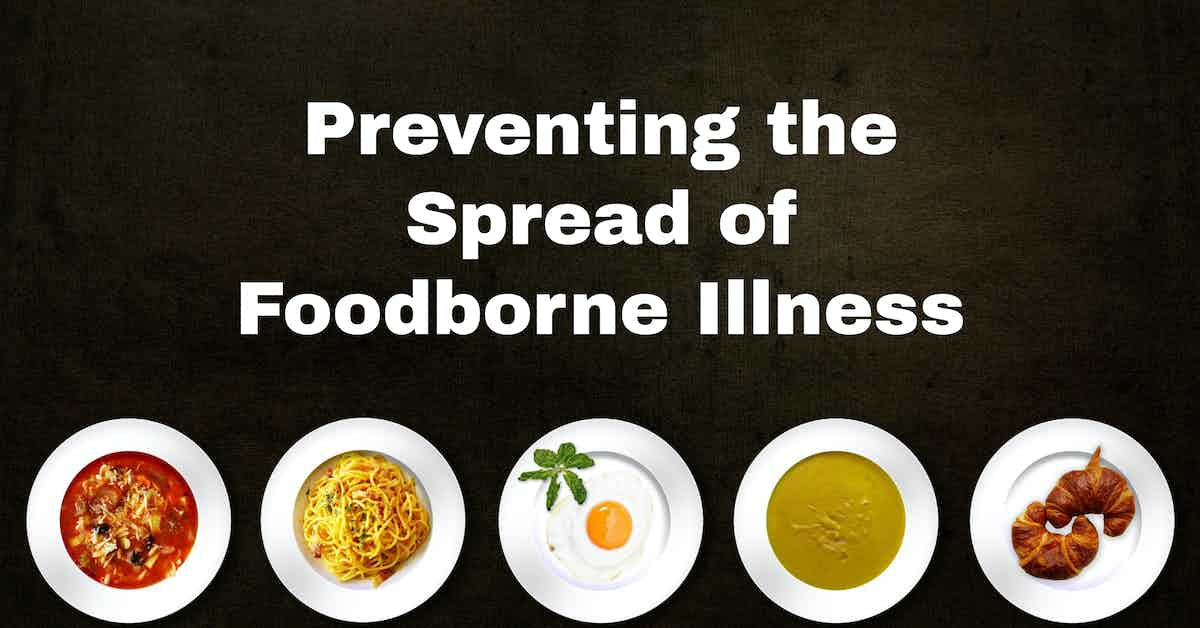Proper cleaning, disinfecting, and consistent handwashing will prevent the spread of deadly foodborne illnesses.

The Burden of Foodborne Illness
The U.S. Centers for Disease Control and Prevention tracks 31 pathogens and various unspecified agents known or believed to cause foodborne illnesses.
The CDC estimates that these pathogens and unknown agents are responsible for upwards of 48 million infections, 128,000 hospitalizations, and 3,000 deaths in the U.S. annually.
Each year, 31 major known pathogens acquired in the United States caused an estimated 9.4 million episodes of foodborne illness.
Additional episodes of illness were caused by unspecified agents, including known agents with insufficient data to estimate agent-specific illness, known agents not yet recognized as causing foodborne illness, substances known to be in food but of unproven pathogenicity, and unknown agents.
To estimate these additional illnesses, we used data from surveys, hospital records, and death certificates to estimate illnesses, hospitalizations, and deaths from acute gastroenteritis and subtracted illnesses caused by known gastroenteritis pathogens.
If the proportions acquired by domestic foodborne transmission were similar to those for known gastroenteritis pathogens, then an estimated 38.4 million episodes of domestically acquired foodborne illness were caused by unspecified agents, resulting in 71,878 hospitalizations and 1,686 deaths.
Foodborne Illness Acquired in the United States—Unspecified Agents
According to the CDC's website, the top 5 culprits include:
- Norovirus
- Salmonella
- Clostridium perfringens
- Campylobacter spp.
- Staphylococcus aureus
Each one of these is highly susceptible to removal and elimination through standardized cleaning, disinfection, and handwashing protocols.
Preventing the Spread of Foodborne Illness With Basic Handwashing Practices
Food safety begins and ends with clean hands.
The U.S Department of Agriculture recommends that anyone handling food wash their hands with soap and water for a minimum of 20 seconds;
- Before and after handling food.
- After using the bathroom.
- After changing a diaper.
- After handling pets.
- After tending to a sick person.
- After blowing your nose, coughing, or sneezing, and;
- After handling uncooked eggs, raw meat, poultry, or fish and their juices.
Additionally, the USDA advises that anyone handling food with a skin abrasion or infection wear protective gloves to prevent the transmission of infection to and from the wound.
Ensuring Food Worker Handwashing Compliance
According to a study of food service workers conducted by the CDC's Environmental Health Services, in less than optimal environments, food service workers consistently missed numerous opportunities to wash their hands throughout the workday.
EHS-Net interviewed and watched food workers to collect data on their food-handling practices, including handwashing.
When we observed workers, we found:
Workers were more likely to wash their hands:
-When they were not busy.
-In restaurants that provided food-safety training.
-In restaurants with more than one hand sink and with a hand sink where the worker can see it.
Workers did about nine activities an hour where they should have washed their hands.
But they only washed their hands about 2-3 times an hour.
Only 1 in 4 workers washed their hands after preparing raw animal products or handling dirty equipment, and only 1 in 10 workers washed their hands after touching their face or body.
The study concluded that removing barriers to handwashing, implementing ongoing handwashing training, and revising food preparation steps were critical to increasing compliance to optimal levels.
Preventing the Spread of Foodborne Illness With Enhanced Cleaning and Disinfection
The pathogens and bacteria primarily responsible for the bulk of foodborne illness in the U.S. spread rapidly and are highly transmissible but easily removed when subjected to consistent, high-quality cleaning and disinfection services.
- Per the USDA, food preparation surfaces should often be cleaned with a commercial-grade soap-based detergent applied with microfiber and hot water.
- All food preparation areas should be cleaned and then disinfected with an EPA-registered disinfectant deemed safe for food preparation surfaces.
- Cross-contamination protocols, such as color-coded microfiber and the two-bucket method, should be observed when cleaning food preparation areas and surfaces to prevent the spread of outside contaminants to food prep surfaces, and germs and bacteria from those surfaces to other parts of the facility, and;
- Cutting boards, knives, and other food prep cookware and utensils should be cleaned with hot soapy water and allowed to dry before reuse.
References & Resources
- Burden of Foodborne Illness: Findings
- Cleanliness Helps Prevent Foodborne Illness
- How to Prevent Food Poisoning
- Causes and Prevention of Foodborne Illness
- Foodborne Illness and Disease
Takeaway
The most common causes of foodborne illness stem from easily preventable yet highly transmissible pathogens and bacteria.
The key to prevention is a combination of consistent, high-quality cleaning and disinfection services and regular occupant handwashing with soap and water.
Due to cross-contamination risks, only trained service providers should be allowed to clean and disinfect food preparation and service areas.
Outsourcing is a proven method for onboarding highly in-demand cleaning and disinfection services and experience for a fraction of the price of maintaining a similar service in-house.
If you would like more information regarding the effectiveness of high-performance infection prevention and control measures, or if you would like to schedule a free, no-obligation on-site assessment of your facility's custodial needs, contact us today for a free quote!
In Bakersfield, CA, call (661) 437-3253
In Fresno, CA, call (559) 206-1059
In Valencia, CA, or Santa Clarita, CA, call (661) 437-3253
In Palmdale, CA, or Lancaster, CA, call (661) 371-4756
![]()
![]()

